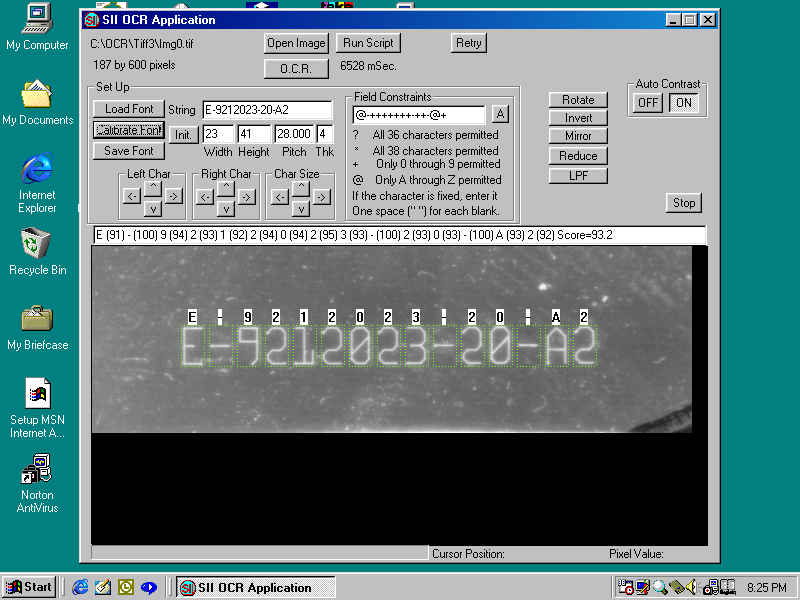![[Stanford Imaging Inc.]](wlogo.jpg)
![[Stanford Imaging Inc.]](wlogo.jpg)
Using the left mouse button, draw a box to tightly fit the first character (in the example below, that is the "E"). Then use the right mouse button to draw another box to tightly fit the last character (in the example below, that is the "2"). Next, go to the "String" box in the top left of the screen, and enter the correct string. Make sure all the characters are correct: including letters, numbers, spaces (if any, there are none in our example), and delimiters (there are "-" in our example). Next, go to the "Field Constraints" box to the right of the "String" box, and click on the "A" button. Now you are ready to click on the "Calibrate Font" button on the left of the screen. The calibration can take several seconds, or even longer (e.g. 30 seconds), depending on the image and font.
![[Calibrate Screen Shot]](calibrate.png)
After finishing the calibration, you can see the screen below. There are small black characters in small white boxes painted just above each character of the original image. Also each original character should be tightly surrounded by a green box. In addition, there will be a string written in the box just above the image. In this string, each character will appear, followed in parentheses by its respective quality score. Finally, the combined quality score for the entire string will be shown. In the example below, this result string will begin with "E (91)", indicating that the score for the first character "E" was 91. The result string ends with "2(92) Score=93.2". This means that the score for the last character "2" was 92, and that the combined quality score for the entire string was 93.2. The scores (for individual characters, as well as for the combined string) will range from 0 to 100, and should be interpreted much like high school examination scores. A score in the 90's means "Excellent", 80's are "Good", 70's "So So", below 60 are useless.

Note that the values of width, height, pitch, and thickness were "fine tuned" by the calibration process from their original rough estimates which were based solely on the two green boxes that were marked around the first and last characters. For example, the width estimation based on the two user-defined boxes was 22 pixels. After performing actual measurements on the entire string, the system computed a width of 23. Also, a value was assigned to thickness.
Copyright © 1999 SII All rights reserved.